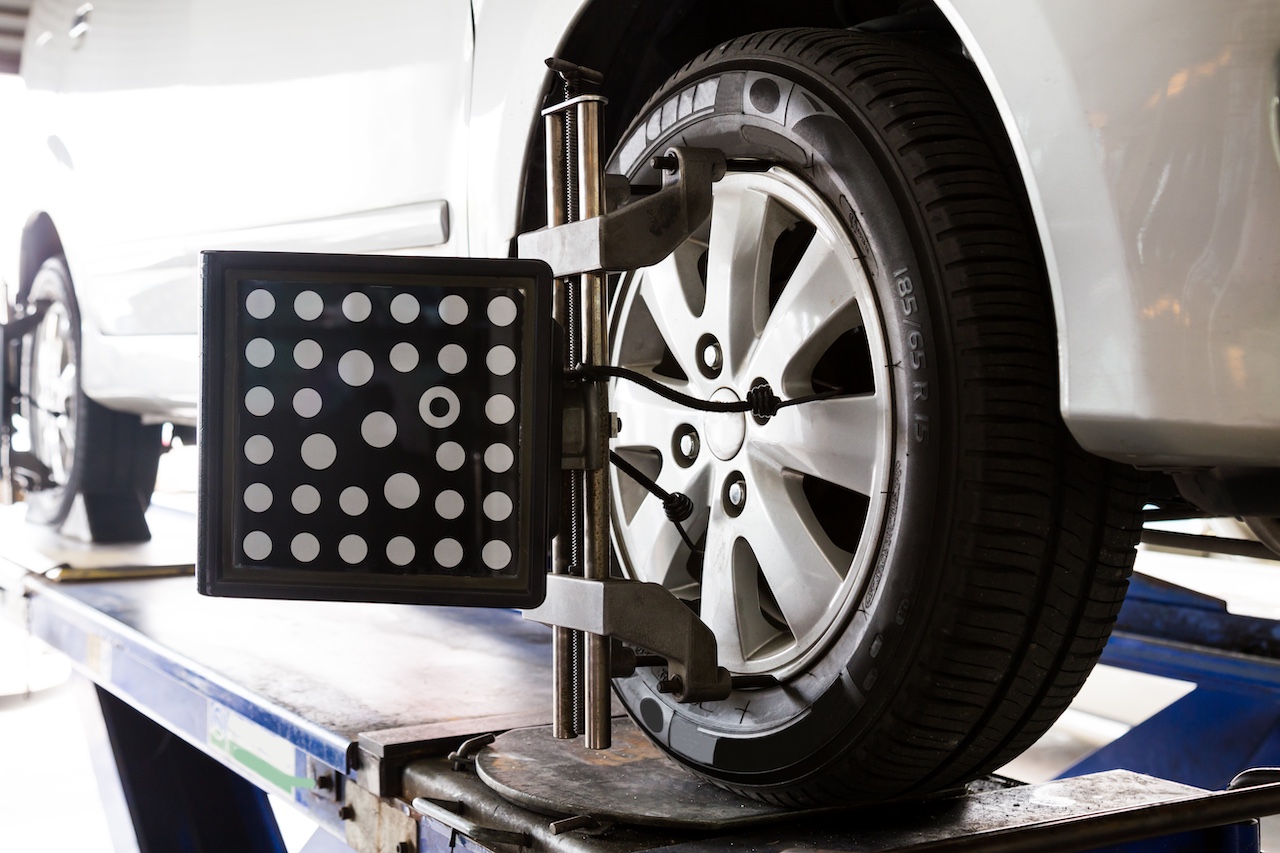A car is an intricate system made up of interconnected components. Each component’s integrity is essential because harm to one component can cause malfunction in other systems that are connected. Causing problems to worsen and perhaps causing major faults. Proactive upkeep and routine inspections are crucial. To sum up, the interdependence of a car’s parts emphasizes the value of thorough maintenance.
However, not all of us are experts in the field. Neither can we spot minute adversities in vehicle performance. For example, wheel alignment and balancing. Thus, resulting in no resolution and further damage.
Difference Between Wheel Alignment and Tire Balancing: Which Does Your Car Need?
In this blog, we’ll take you through the aspects of wheel balancing and alignment. Discussing their differences and functions.
To help you distinguish between the two, allowing an accurate diagnosis at a time of need.
Tire Balancing: Definition
The technique of tire balancing makes sure that the weight of a wheel is stable. Also, the tire load is dispersed equally across the axle. For smooth driving, this process is essential.
Unbalanced tires may cause vibrations when driving. Also, such tires can lead to uneven tire wear and even damage to suspension parts. In addition to improving vehicle control and tire longevity, properly balanced tires also make for a more comfortable ride.
Balancing is done to counterbalance any heavy spots in the wheel. Wheel balancing usually entails adding tiny weights to the tire’s rim.
Types of Tire Balancing
There are two types of tire balancing. These include:
- Road Force Balancing: A specific tire balancing method called road force balancing looks at how a tire responds to the road surface in actual driving situations. In this procedure, the tire is rotated on a machine made to replicate these conditions while a regulated load is applied to it. Finding differences in radial and lateral forces is the goal.
- Dynamic Balancing: This method provides a thorough study of imbalances by evaluating the mass distribution around the axis of rotation while the tire is moving. Weights are strategically placed on the wheel during dynamic balancing.
Causes of Improper Tire Balancing
Tires need to be rebalanced, as they often lose their balance. This happens because of multiple reasons. Including:
- Uneven Weight Distribution: Each axle needs to be given the same load for the wheel to not face pressure. If the contrary occurs, tires get wobbly.
- Dirt Deposit: Dirt or debris built up in the wheel axles can lead to tires becoming unbalanced.
Signs Tires Need Balancing
Here are some signs that will help you notice if your car’s tires are wobbly or not. Let’s find out.
- Tire pressure fluctuates suddenly.
- If your vehicle feels wobbly or less under control, chances are the tires need balancing.
- Clunking sounds from the tires can be heard.
When to Opt for Wheel Balancing?
Here are certain situations when wheel balancing is the right choice for your car’s upkeep. These will help you stay away from clouds of doubt in urgent situations.
- The ideal time to get your car’s wheels balanced is after every 6000 miles.
- If you can hear vibrations from the tires, it’s time for wheel balancing.
- When repairing a flat tire, get wheel balancing done as well.
- When fitting a new tire, balance the wheel first.
Read More:
8 Signs Your Vehicle Has a Damaged Exhaust System
The Importance of Regular Transmission Maintenance
Wheel Alignment: What Is It?
Wheel alignment is the process of modifying a car’s suspension system. To make sure the wheels are positioned according to the manufacturer’s guidelines.
When the wheels are properly aligned, they are perpendicular to the ground and parallel to one another. This has a big impact on handling, tire wear, and overall vehicle safety. The wheels’ angles are adjusted throughout the wheel alignment process. Ensuring they are perpendicular to the ground and parallel to one another.
A specialist measures the existing alignment angles using a wheel alignment tool. They will move the wheels to the appropriate locations if necessary. Regular upkeep and wheel alignment elevates driving safety.
Types of Wheel Alignment
Wheel alignment has a number of variations. Including:
Caster Alignment: This is the steering axis angle as seen from any side of the car. Particularly at high speeds, a positive caster angle improves steering stability by tilting the top of the steering axis toward the back. This angle improves control. By assisting the wheels in returning to center after turning.
Camber Alignment: This is the tires’ angle as seen from the front. When the top of a wheel leans outward, it has a positive camber. When it leans inward, it has a negative camber. The way the tires come in touch with the road during turns is influenced by camber. Excessive positive or negative camber can affect vehicle stability and cause uneven tire wear.
Toe Alignment: The measurement of the wheels’ angle with respect to the vehicle’s centerline is known as toe alignment. To determine if the wheels are parallel or misaligned, a professional employs specialized equipment. To ensure perfect wheel alignment, the tie rods are adjusted to correct the angle of the toe.
Causes of Incorrect Wheel Alignment
Incorrect wheel alignment can happen for several reasons. Ranging from hitting potholes and curbs to improper maintenance. Neglected maintenance can easily throw your wheels out of alignment. The components in the suspension system can also contribute to the issue.
Symptoms of Incorrect Wheel Alignment
There are some indicators of poor wheel alignment. These can range from:
- Excessive Tire Wear in Particular Zones of the Tire: This means the pressure isn’t being equally distributed. Resulting in uneven tear and wear.
- Car Keeps Drifting: If you find it difficult to stop your car from drifting to one side continuously, it’s a bad sign. Often, this is an effect of wheel misalignment.
- Vibrating Steering Wheel: Steering vibration is a direct indicator of incorrect wheel alignment, particularly at higher speeds.
When to Book a Wheel Alignment Slot for Your Car?
Car wheels get misaligned because of a variety of reasons. Ranging from rocky roads, bumps along the way, potholes and whatnot. Here are some tell-tale signs to detect if your car needs wheel alignment:
- Get wheel alignment done after you buy new tires.
- If you can sense that the steering wheel isn’t balanced in the center.
- After the replacement of any suspension components.
- The car keeps drifting to one side.
- If you notice usual patterns on the tires.
- If driving feels a little off after hitting a pothole.
While not poles apart, the services of wheel alignment and balancing have respective functions. To keep your car running, efficient and healthy. The functions have different goals. Balancing the tire means adjusting the load on the wheel. While the other keeps the suspension system safe and aligned.
The Final Word
Wheel alignment and balancing are two separate functions that help elevate your wheel’s performance and safety. Often, cars are prone to accidents because of misaligned or imbalanced wheels. Neither is safe, often leading to fatal accidents. So, keeping your tires balanced is important for not only your car but also the driver’s and passenger’s safety.
If you’re still in a dilemma between the two, get in touch with us. Our mechanics will take a quick look at your wheels and let you know if there are any anomalies at all. Leaving no room for confusion. Get your tires fixed as soon as you feel something is off. Remember, it is always a thousand times better to be safe than sorry!


